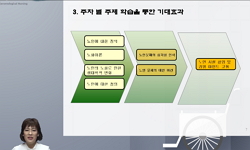배경 및 목적: 학령전기 아동의 언어발달 개인차가 또래 대비 지연 또는 지체 수준으로 의심되는 경우, 조기에 전문가 개입을 통한 중재가 필요하다. 이에 다수의 또래 집단을 교육하면서 아...
http://chineseinput.net/에서 pinyin(병음)방식으로 중국어를 변환할 수 있습니다.
변환된 중국어를 복사하여 사용하시면 됩니다.
- 中文 을 입력하시려면 zhongwen을 입력하시고 space를누르시면됩니다.
- 北京 을 입력하시려면 beijing을 입력하시고 space를 누르시면 됩니다.


교사보고형 아동 언어능력 평가척도(TROLL) 개발을 위한 예비연구 = Developing Korean Version of Teacher Rating of Oral Language and Literacy (TROLL): A Preliminary Study
한글로보기https://www.riss.kr/link?id=A106116757
- 저자
- 발행기관
- 학술지명
- 권호사항
-
발행연도
2019
-
작성언어
-
- 주제어
-
KDC
370
-
등재정보
KCI등재,SCOPUS,ESCI
-
자료형태
학술저널
- 발행기관 URL
-
수록면
47-60(14쪽)
-
KCI 피인용횟수
0
- DOI식별코드
- 제공처
-
0
상세조회 -
0
다운로드
부가정보
국문 초록 (Abstract)
배경 및 목적: 학령전기 아동의 언어발달 개인차가 또래 대비 지연 또는 지체 수준으로 의심되는 경우, 조기에 전문가 개입을 통한 중재가 필요하다. 이에 다수의 또래 집단을 교육하면서 아동들을 관찰할 수 있는 교사가 언어지연이 의심되는 아동의 언어능력을 간단한 평가척도로 선별할 수 있다면, 조기언어중재에 대한 접근성을 더욱 높일 수 있을 것으로 기대된다. 따라서 본 연구에서는 교사보고형 아동 언어능력 평가척도의 타당성을 검토해 보고자 한다. 방법: 본 연구는 Dickinson 등(2003)의 교사보고형 아동 언어능력 평가척도를 한국어로 번안하여 사용하였다. 인천 및 경기도 소재 6개 기관 만 4-6세 74명의 아동 및 교사 6인이 연구에 참여하였다. 자료분석을 위해 구인타당도, 문항양호도, 내적합치도를 검증하였으며, 구인타당도 검증을 위해 1급 언어재활사가 어휘 및 언어 공식검사를 실시하여 교사보고형 아동 언어능력 평가척도와의 상관을 검토하였다. 결과: 문항양호도 검증 결과, 하위구인 간(읽기, 쓰기) 상관계수가 .849로 나타나 두 하위구인을 하나의 구인(초기문해)으로 취합하였다. 타 분석은 모두 적합한 결과를 도출하였으나 준거 타당도 결과 언어사용 하위척도와 공식검사 간 상관은 유의하지 않았다. 논의 및 결론: 교사보고형 아동 언어능력 평가척도는 국내의 학령전기 아동의 언어 능력을 측정하기에 양호한 검사로 확인되었다. 다만, 변별력이 높지 않은 문항은 내용 수정이 필요하며, 이에 대한 제안을 논의하였다.
다국어 초록 (Multilingual Abstract)
Objectives: When a preschool child is suspected or having a delay in language development, an early intervention via an expert is needed. If teachers, who are capable of observing a large number of children in the course of education for a large-scale...
Objectives: When a preschool child is suspected or having a delay in language development, an early intervention via an expert is needed. If teachers, who are capable of observing a large number of children in the course of education for a large-scale peer group, could screen children with suspected language delays, it will increase access to further early language interventions. Thus, this study set out to validate a teacher-reported preliminary inventory for children’s language abilities. Methods: The inventory used in this study was based on Dickinson, McCabe, & Sparague (2003) and was revised and supplemented items to measure three subcomponents (language use, reading, and writing) of children’s language abilities. The study included 74 4- to 6-year-olds and six teachers. Item quality, interitem consistency, and construct validity were analyzed. For validity testing related to criteria, two speech-language pathologists conducted standardized tests on vocabulary and language and reviewed their correlations with the inventory. Results: The test results of item quality show that the correlation coefficient between sub-constructs (reading and writing) was .849, which led to the combination of the two sub-constructs into one (early literacy). Other analyses generated all proper results, but the criteria validity results show no significant correlations between the sub-constructs of language use and official tests. Conclusion: The teacher-reported inventory for children’s language abilities was found to be a good test to measure preschool children’s language abilities in Korea. Recognizing a need to revise the content of items of lower discrimination, the study made proposals for their revision.
참고문헌 (Reference)
1 한지윤, "부모 보고형 아동 언어 능력 평가도구(KBPR)의 표준화를 위한 예비연구" 한국언어치료학회 27 (27): 69-84, 2018
2 Thal, D., "Validity of the MacArthur–Bates Communicative Development Inventories for measuring language abilities in children with cochlear implants" 16 (16): 54-64, 2007
3 Cabell, S. Q., "Validity of teacher report for assessing the emergent literacy skills of at-risk preschoolers" 40 (40): 161-173, 2009
4 Thal, D. J., "Validity of a parent report measure of vocabulary and syntax for preschool children with language impairment" 42 (42): 482-496, 1999
5 Rodríguez, B. L., "Using a teacher rating scale of language and literacy skills with preschool children of English-speaking, Spanish-speaking, and bilingual backgrounds" 39 (39): 303-311, 2011
6 Song, S., "Tracing children’s vocabulary development from preschool through the school‐age years: an 8‐year longitudinal study" 18 (18): 119-131, 2015
7 Dickinson, D. K., "Teacher Rating of Oral Language and Literacy (TROLL): a research-based tool" Center for the Improvement of Early Reading Achievement 2001
8 Dickinson, D. K., "Teacher Rating of Oral Language and Literacy (TROLL): Individualizing early literacy instruction with a standards-based rating tool" 56 (56): 554-564, 2003
9 Cohen, J., "Statistical power analysis for the behavioral sciences" Lawrence Erlbaum Associates 1988
10 Kim, Y. T., "Sequenced Language Scale for Infants(SELSI)" Special Education Publishing 2003
1 한지윤, "부모 보고형 아동 언어 능력 평가도구(KBPR)의 표준화를 위한 예비연구" 한국언어치료학회 27 (27): 69-84, 2018
2 Thal, D., "Validity of the MacArthur–Bates Communicative Development Inventories for measuring language abilities in children with cochlear implants" 16 (16): 54-64, 2007
3 Cabell, S. Q., "Validity of teacher report for assessing the emergent literacy skills of at-risk preschoolers" 40 (40): 161-173, 2009
4 Thal, D. J., "Validity of a parent report measure of vocabulary and syntax for preschool children with language impairment" 42 (42): 482-496, 1999
5 Rodríguez, B. L., "Using a teacher rating scale of language and literacy skills with preschool children of English-speaking, Spanish-speaking, and bilingual backgrounds" 39 (39): 303-311, 2011
6 Song, S., "Tracing children’s vocabulary development from preschool through the school‐age years: an 8‐year longitudinal study" 18 (18): 119-131, 2015
7 Dickinson, D. K., "Teacher Rating of Oral Language and Literacy (TROLL): a research-based tool" Center for the Improvement of Early Reading Achievement 2001
8 Dickinson, D. K., "Teacher Rating of Oral Language and Literacy (TROLL): Individualizing early literacy instruction with a standards-based rating tool" 56 (56): 554-564, 2003
9 Cohen, J., "Statistical power analysis for the behavioral sciences" Lawrence Erlbaum Associates 1988
10 Kim, Y. T., "Sequenced Language Scale for Infants(SELSI)" Special Education Publishing 2003
11 Pua, E. P. K., "Screening bilingual preschoolers for language difficulties: utility of teacher and parent reports" 60 (60): 950-968, 2017
12 MacCallum, R. C., "Sample size in factor analysis" 4 (4): 84-99, 1999
13 Kim, Y. T., "Receptive & expressive vocabulary test(REVT)" Seoul Community Rehabilitation Center 2009
14 Peterson, P., "Promoting generalization and maintenance of skills learned via natural language teaching" 4 (4): 90-131, 2009
15 Kim, Y. T., "Preschool receptive-expressive language scale(PRES)" Seoul Community Rehabilitation Center 2003
16 Morais, J., "Phonological awareness in reading" Springer 31-71, 1991
17 Kim, Y. T., "Peabody Picture Vocabulary Test-Receptive" Seoul Community Rehabilitation 1995
18 Bishop, D. V., "Parent and teacher report of pragmatic aspects of communication : use of the Children’s Communication Checklist in a clinical setting" 43 (43): 809-818, 2001
19 Bedore, L. M., "Parent and teacher rating of bilingual language proficiency and language development concerns" 14 (14): 489-511, 2011
20 Sim, H. S., "Paradise-Fluency Assessment II" Paradise Welfare Foundation 2010
21 Prelock, P. A., "Multiple perspectives for determining the roles of speech-language pathologists in inclusionary classrooms" 31 (31): 213-218, 2000
22 Hughes, C., "Measuring the foundations of school readiness : introducing a new questionnaire for teachers : the Brief Early Skills and Support Index(BESSI)" 85 (85): 332-356, 2015
23 Stanovich, K. E., "Matthew effects in reading : some consequences of individual differences in the acquisition of literacy" 21 (21): 360-407, 1986
24 Conti-Ramsden, G., "Language development and assessment in the preschool period" 22 (22): 384-401, 2012
25 Kim, H. H., "Korean version-Boston Naming Test for Children(K-BNT-C)" Hakjisa 2007
26 Pae, S., "Korean MacArthur-Bates Communicative Development Inventories(K M-B CDI)" Mindpress 2011
27 Moon, S. B., "Korean Kaufman assessment battery for children(K-ABC)" Hakjisa 2003
28 Korean Ministry of Education, "Kindergarten curriculum (Notification No. 2015-61)"
29 Guttman, L., "Image theory for the structure of quantitative variates" 18 (18): 277-296, 1953
30 Scarborough, H. S., "Handbook of early literacy research" Guilford Press 97-110, 2001
31 Gorsuch, R. L., "Factor analysis" Lawrence Erlbaum Associates 1983
32 Feldman, H. M., "Concurrent and predictive validity of parent reports of child language at ages 2 and 3 years" 76 (76): 856-868, 2005
33 Klee, T., "Concurrent and predictive validity of an early language screening program" 41 (41): 627-641, 1998
34 McGinty, A. S., "Classroom-based versus pull-out language intervention : an examination of the experimental evidence" 1 (1): 3-26, 2006
35 Gregory, K. D., "Classification accuracy of teacher ratings when screening nonmainstream English-speaking kindergartners for language impairment in the rural south" 49 (49): 218-231, 2018
36 Bradley, L., "Categorizing sounds and learning to read : a causal connection" 301 (301): 419-421, 1983
37 Dockrell, J. E., "Assessing language skills in preschool children" 6 (6): 74-85, 2001
38 Velicer, W. F., "Affects of variable and subject sampling on factor pattern recovery" 3 (3): 231-251, 1998
39 Kaiser, A. P., "Advances in early communication and language intervention" 33 (33): 298-309, 2011
40 Elwér, Å., "A retrospective longitudinal study of cognitive and language skills in poor reading comprehension" 56 (56): 157-166, 2015
41 Catts, H. W., "A longitudinal investigation of reading outcomes in children with language impairments" 45 (45): 1142-1157, 2002
42 Hall, P. K., "A follow-up study of children with articulation and language disorders" 43 (43): 227-241, 1978
동일학술지(권/호) 다른 논문
-
호흡훈련기를 활용한 성대에어로빅치료 프로그램의 음성개선 효과 사례연구
- 한국언어청각임상학회
- 강하늘(Ha-Neul Kang)
- 2019
- KCI등재,SCOPUS,ESCI
-
한국 대학생과 미국 대학생의 AAC 사회어 그림 상징 인식에 대한 문화적 차이
- 한국언어청각임상학회
- 강로원(Rowon Kang)
- 2019
- KCI등재,SCOPUS,ESCI
-
모국어 말소리 대조 시 작업기억과 변별능력 간의 연관성
- 한국언어청각임상학회
- Usha Shastri
- 2019
- KCI등재,SCOPUS,ESCI
-
의미자질분석 중재에 따른 장노년층의 이름대기 및 인지능력 변화
- 한국언어청각임상학회
- 김정완(JungWan Kim)
- 2019
- KCI등재,SCOPUS,ESCI
분석정보
인용정보 인용지수 설명보기
학술지 이력
| 연월일 | 이력구분 | 이력상세 | 등재구분 |
|---|---|---|---|
| 2018 | 평가예정 | 계속평가 신청대상(등재유지) | |
| 2015-01-01 | 평가 | 등재학술지 유지(등재유지) |  |
| 2013-03-29 | 학술지명변경 | 한글명 : Communication Sciences and Disorders</br>외국어명 : Communication Sciences and Disorders |  |
| 2012-12-18 | 학술지명변경 | 한글명 : 언어청각장애연구</br>외국어명 : Communication Sciences and Disorders |  |
| 2011-01-01 | 평가 | 등재학술지 유지(등재유지) |  |
| 2009-01-01 | 평가 | 등재학술지 유지(등재유지) |  |
| 2007-06-25 | 학술지명변경 | 한글명 : 언어청각장애연구</br>외국어명 : Korean Journal of Communication Disorders |  |
| 2007-01-01 | 평가 | 등재학술지 유지(등재유지) |  |
| 2006-09-13 | 학술지명변경 | 한글명 : 언어청각장애연구</br>외국어명 : Korean Journal of Communication Disorders |  |
| 2005-10-14 | 학술지명변경 | 한글명 : 언어청각장애연구</br>외국어명 : Korean Journal of Communication Disorders |  |
| 2004-01-01 | 평가 | 등재학술지 선정(등재후보2차) |  |
| 2003-01-01 | 평가 | 등재후보 1차 PASS(등재후보1차) |  |
| 2001-07-01 | 평가 | 등재후보학술지 선정(신규평가) |  |
학술지 인용정보
| 기준연도 | WOS-KCI 통합IF(2년) | KCIF(2년) | KCIF(3년) |
|---|---|---|---|
| 2016 | 1.13 | 1.13 | 1.17 |
| KCIF(4년) | KCIF(5년) | 중심성지수(3년) | 즉시성지수 |
| 1.21 | 1.18 | 1.626 | 0.33 |





 스콜라
스콜라



